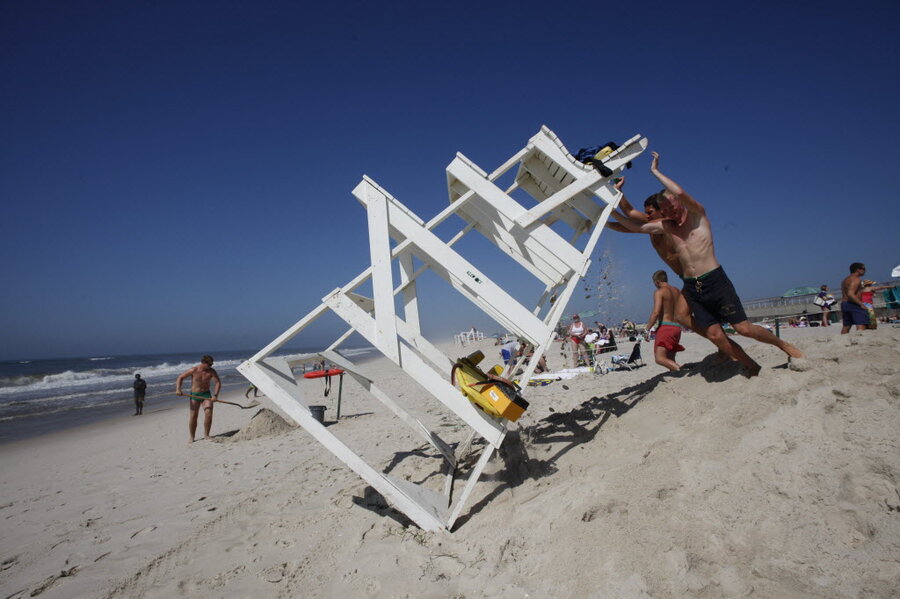No more landlines on Fire Island? Verizon seeks to go wireless.
Loading...
Last October, Hurricane Sandy struck the shores of New York and New Jersey, upending houses and their inhabitants. Wireless providers scrambled to get service back to the storm-torn areas. On outlying islands along the New York and New Jersey coast, underground phone lines had been washed away.
Nearly eight months later, nearly all of the storm-affected areas are well on their way to rebuilding, and cell phone reception has long since been restored. But, residents of Fire Island– a barrier island off the New York coast– still do not have their landlines restored, and they might ever get them back.
Verizon Communications filed an application with the Federal Communications Commission to discontinue landline service in “certain parts of New Jersey and New York affected by Hurricane Sandy,” most notably on Fire Island. Instead of restoring the old copper wire networks in the tiny community, the telecom provider has proposed offering its wireless communication service: Voice Link.
In May, Verizon received approval from the New York Public Service Commission to introduce the use of wireless technology– Voice Link– as an alternative to landlines.
Voice Link uses a compact box that plugs into a power outlet and provides a phone connection via the Verizon wireless network. The device can also run off of batteries for 36 hours with two hours of talk time.
Before Hurricane Sandy hit, there was a system of copper phone lines. But the storm washed away the phone lines, and it does not seem cost effective to restore the copper system, says Tom Maguire, Verizon’s senior vice president of national operations.
There are approximately 250 permanent residents on Fire Island, which is a popular tourist destination for New Yorkers during the summer. Mr. Maguire estimates that the cost per person of restoring copper lines to the island would cost about $17,000 per person, about $5 million in total.
Considering that fewer people are using landlines than ever before, Maguire says that restoring an increasingly archaic service doesn’t seem to add up. “A dollar I spend on copper is a dollar I don’t get to spend on new technologies,” Maguire explains.
But Wireless networks “just don’t provide the performance” that landlines do, says Professor John Cioffi a professor emeritus at Stanford University. (Mr. Cioffi is also the Chief Executive Officer of ASSAI Broadband Company). A wireless network is prone to overloading: “once you get enough traffic, it will come crashing down,” he says. Eighty percent of US mobile data is offloaded to WiFi networks right now that rely on cables.
“There is a hugely important public safety concern,” says Christopher Sterling, a professor at George Washington University and author of “ A History of Technology, Policy, and Economics.” Mr. Sterling worries about what will happen during an emergency when there is high stress on wireless networks. “When something occurs and everybody reaches for the phone, the wireless lines very quickly fill up and you can’t get through,” Sterling says.
There are other practical concerns with a wireless system. Wireless connections can’t support fax machines, for instance. And doctors use landlines to remotely monitor their patients’ heart rates.
Maguire from Verizon says that it all comes back to what customers want.
“I would look backwards on what’s been happening in the industry: fewer and fewer people are relying on copper,” Maguire says. Verizon does not plan on removing copper or optic fiber phone lines from their offerings everywhere, but on Fire Island, it makes sense to offer just Voice Link, he said.
Though landlines might seem like they are passé, Sterling cautions, they might not be something you miss until they are gone. The elimination of landlines on Fire Island, heralds the beginning of the debate over whether or not wireless services could replace landline connections.
The FCC will receive comments on Verizon’s application on landline service until July 29.








